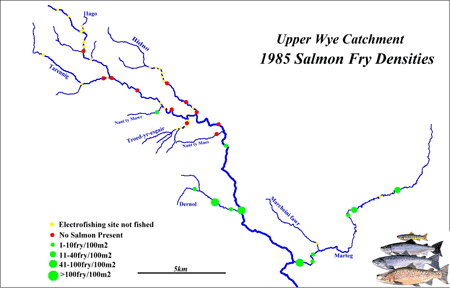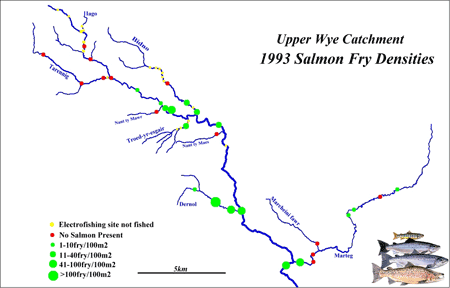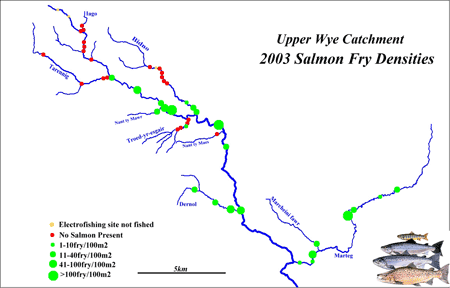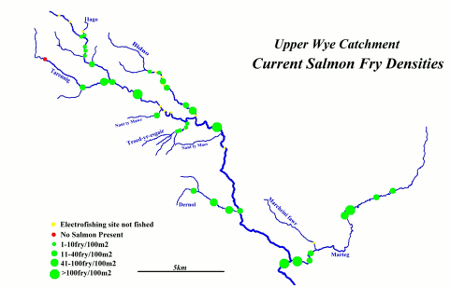pHish - Powys Habitat Improvement Scheme
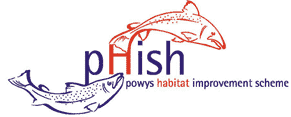
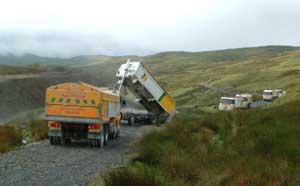
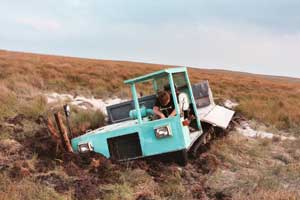
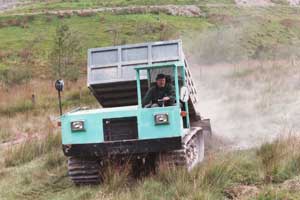
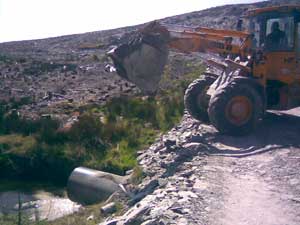
After a year of preparation, pHish was given the go ahead on 1st October 2002. This was the largest venture the Wye & Usk Foundation has ever undertaken and extended our activities into a number of new areas. Funding was granted under the Wales ERDF Objective 2 Priority 2 Measure 1 programme and the overall budget was originally £1.5 million. The project was extended in 2006 to end mid 2008 and the budget increased to £2.1million.
The overall aim was to improve the Wye fishery upstream of Hay in a way that is both long lasting and permanent – sustainably. It was intrinsic to the bid that our fishery work delivers actual benefits to Powys rural economy by way of employment and other targets. Our interpretation of the programme document resulted in a scheme that sought to solve all the significant river problems in the upper Wye.
The project had four main areas of activity:
-
Remedy the effects of acid rain in the extreme upper Wye and Irfon catchments.
-
Continue the ongoing restoration of the habitat in the tributaries.
-
To engage the local community and farmers to appreciate the value of the river.
-
Generate meaningful economic benefits to the local economy from the improvements realised by this project and previous work.
In addition, we took on the responsibility for managing the mitigation stocking of salmon from a hatchery we constructed at Painscastle.
Acid Water Treatment
Taking forward the principles of acid waters management from the work done by Steve Ormerod on the neighbouring Tywi, we determined that success would depend on:
-
Developing an effective yet cheap delivery system that we could manage ourselves.
-
Persuading statutory bodies that the benefits far outweighed any downsides.
-
Finding a monitoring programme that could determine unequivocally whether and to what extent we had been successful.
-
Landowner, Stakeholder and Partnership approval.
Work started in 2003 and we learnt very quickly how difficult liming would be in these remote and high rainfall areas. Summer 2004 was washed out but the summers of 2005, 2006 and spring 2007 were ideal for lime distribution. New skills were learned. By 2007, the required dose had been reached on the upper Wye but not on the Irfon. A significant problem was that here many of the hydrological sources had been obliterated by the forestry drainage schemes, leaving no available sites in which to deliver the lime (this is now being managed in our ISAC project).
To counter this we tried 'sand liming' on a single, severely acid tributary - site 56 - in 2006 and subsequent monitoring suggested a significant water quality improvement. Sand liming involves applying larger (sand sized) chippings of calcium carbonate to first and second order streams. While forestry deprived us of hydrological sources, their intricate road system made this a relatively easy task. Streams without adequate sources now receive annual sand lime treatments.
Monitoring consisted of investigations in the following areas:
-
Diatom analysis.
-
Invertebrate analysis.
-
pH, conductivity and water chemistry.
-
Fish densities and distribution.
-
Leaf litter break down.
The map below shows the monitoring sites and areas limed on the Upper Wye. Please click on the dates to the left of the map for a historical comparison.
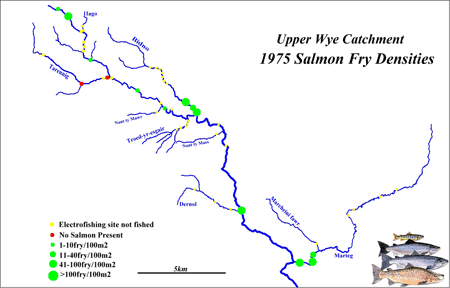
1975 Survey conducted as part of Craig Goch Study. Please note the extent to which salmon fry extend to the extreme upper Wye. However, the Tarennig had no fish, even then.
Habitat and Access work
pHish coppiced, fenced and repaired another 40km of stream to add to the 35km completed in previous projects. By the end of the project, Louis and his teams had completed habitat restoration on the Hafrena, Lynfi Dulas, Felindre, Tregoed, Duhonw, Nant Gwyn, Nantmel Dulas, Irfon, Marteg, Cammarch, Cnyffiad and Hirnant. Six barriers to migration were removed and one fish pass built.
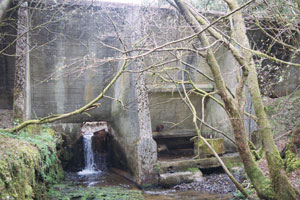
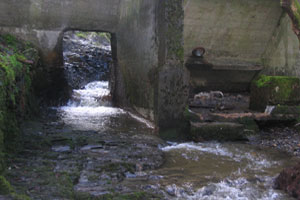
A large obstruction (reservoir) on the Crysan, an upper Wye tributary, before and after breaching.
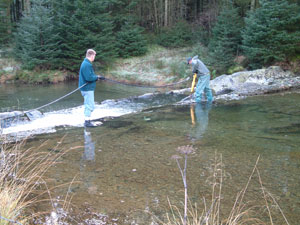
A weir on upper Wye at Pant Mawr was another barrier that was removed during pHish.
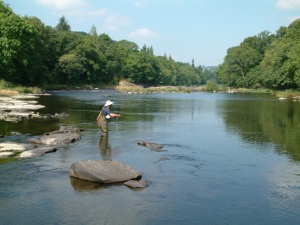
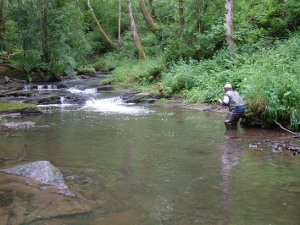
Marketing
A special post Foot and Mouth disease fund, Adfywio enabled the pHish project to create the Foundation's 'Passport' scheme, an initiative to revitalise angling tourism on the back of the physical improvements being made to the fisheries. Once an important local income source, the upper Wye had suffered a collapse in angling business. The Passport scheme begun to turn this around. In addition, it also brings in revenue to newly established wild trout fisheries of the tributaries, created through the Foundation's habitat work, giving farmers and landowners an economic incentive to look after these important rivers.
In 2003, the first 'Upper Wye Passport' was published. Since then the scheme has proved enormously popular with close to exponential growth rates experienced. In 2005 the scheme was expanded to incorporate the Usk. 'Passport to the rivers' It attracts visitors from all over the UK and from abroad means that many local businesses (accommodation providers, tackle shops, fishing guides etc) benefit from the scheme. Giving rivers an economic value is a vital part of ensuring their future health. It provides re-investment to protect and enhance them, ultimately creating a truly 'sustainable' system.
pHish - Partners
Environment Agency Wales
Countryside Council for Wales
Forestry Commission
University of Wales, Cardiff
Centre for Ecology and Hydrology, Bangor
Country Landowners Association
Wales Tourist Board
-
Brecknock Wildlife Trusts

